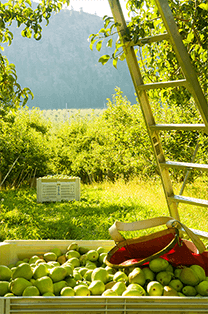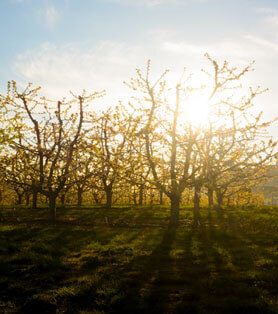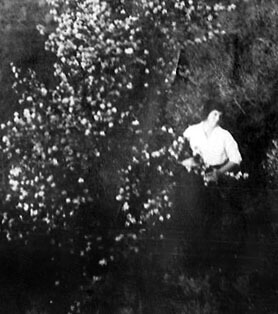Pears
Fruit FAQs

Why can I buy pears that are harvested in the fall during spring and summer months?
Thanks to controlled atmosphere (CA) storage technology, we can enjoy some pear varieties into the spring and summer. Pears with high quality indicators are put into CA rooms at harvest where temperature and humidity is constantly monitored and will remain there until ready to ship. These cold rooms essentially put the pear to sleep, which prevents the fruit from fully ripening. Once out of the cold, the ripening process can begin and pears become available in the spring and summer months. Isn’t technology cool?!
How do I tell if my Stemilt pear is ripe?
The best way to check for ripeness is to press firmly on the neck. If the neck gives slightly to pressure, you have a ripe pear! If it doesn’t give, the pear is not ready to eat and will need more time (preferably on your countertop as refrigeration slows ripening). Learn more about how to ripen pears on our blog.
Don’t pears come off the tree already ripe?
Great question! Pears are harvested mature, but they don’t fully ripen on the tree. If the grower waited until the pear was ripe to harvest, it would be overripe by the time it made its way to the store. Since d’Anjou and Red d’Anjou pears are difficult to tell when they are ready to eat, Stemilt helps their ripening process along by releasing a naturally occurring gas (ethylene) to help induce ripening to pears. This is the same process banana produces use to ripe their fruits as well. Pears will reach optimum pressures at the just-starting-to-ripen stage which allows you to enjoy them a day or two after purchase.
How long will pears keep in the fridge?
If the pear is ripe, it will keep in the refrigerator for 3 to 5 days. Unripe fruit may keep for a week or more, however, do keep in mind that pears will not ripen properly inside the fridge.
I spotted a white residue on the stem bowl of my pear. What is it?
This is Kaolin clay, a natural material that we apply to protect apples (and pears too) from getting sunburned. Yup, even fruit can get sunburned! The clay reflects the sun preventing the burn. It’s usually washed off the fruit during packing but some residue can be left behind in the stem/bottom ends of the fruit, where the brushes don’t reach.





